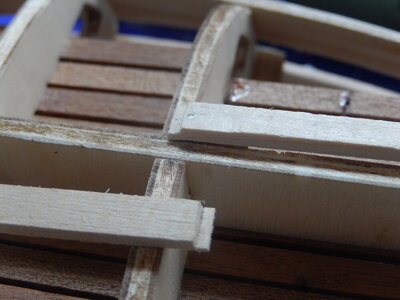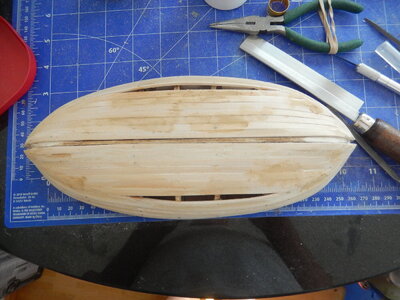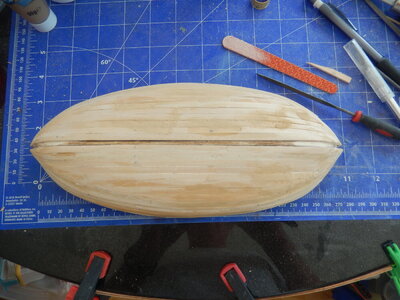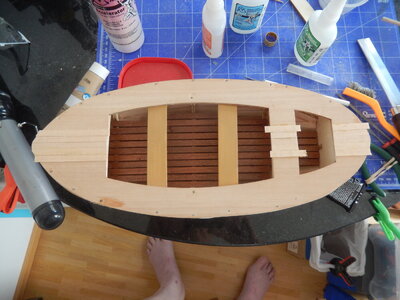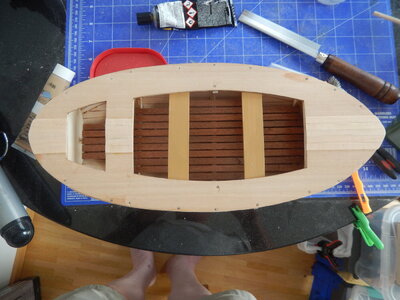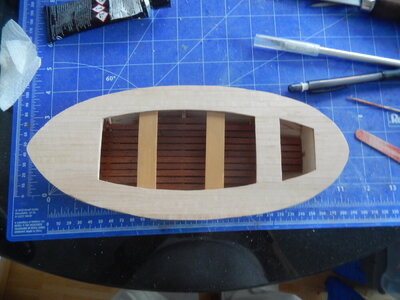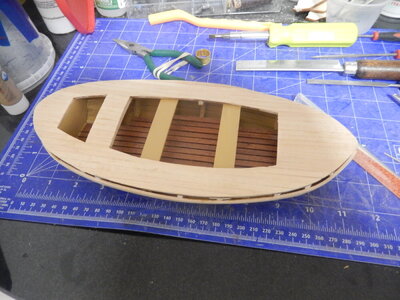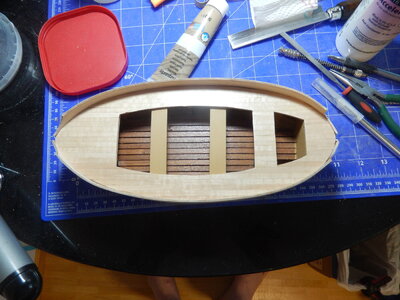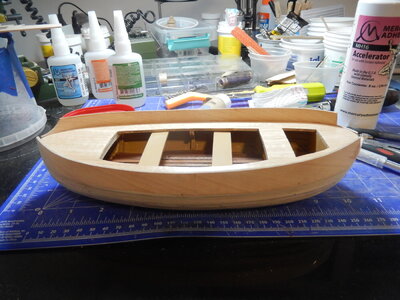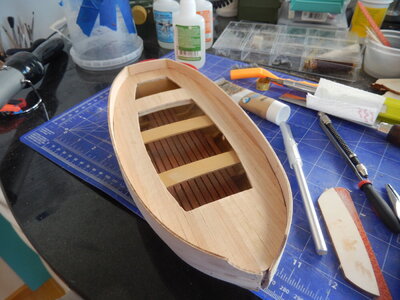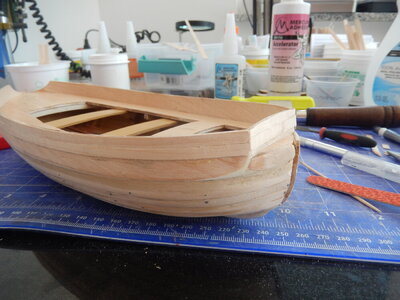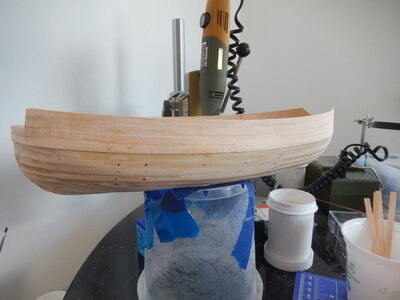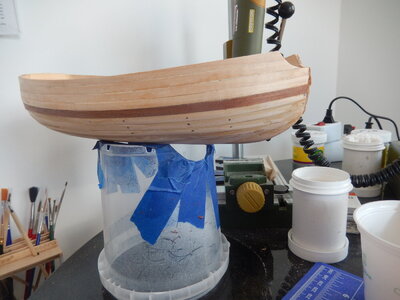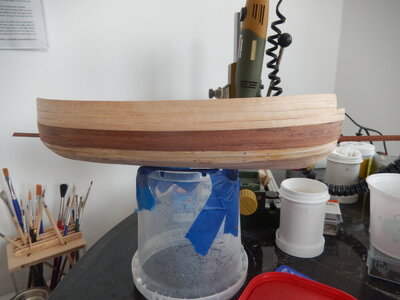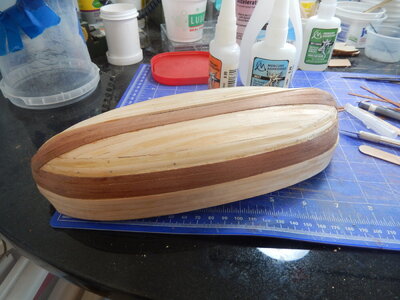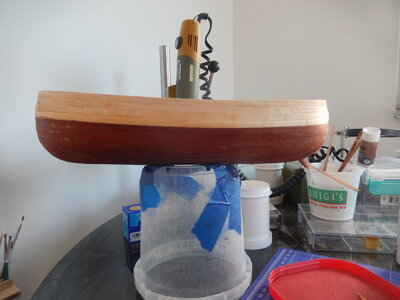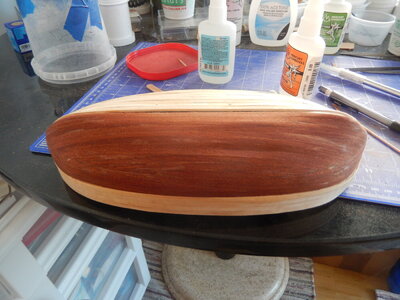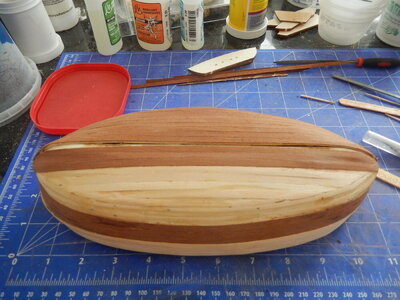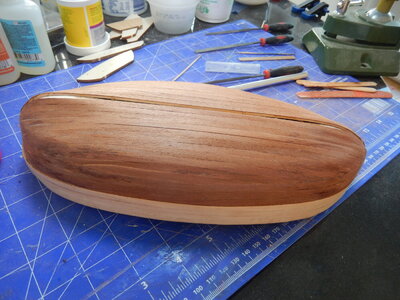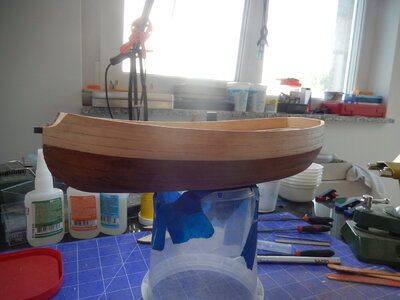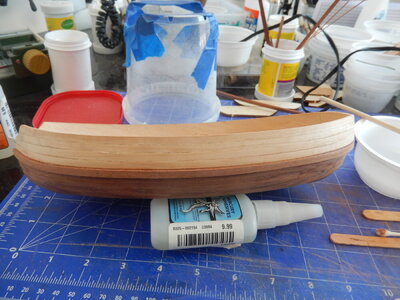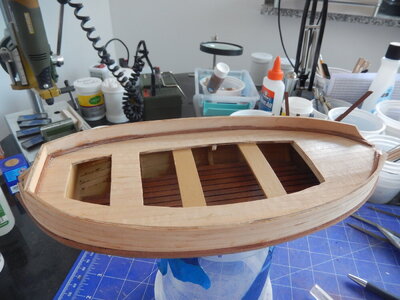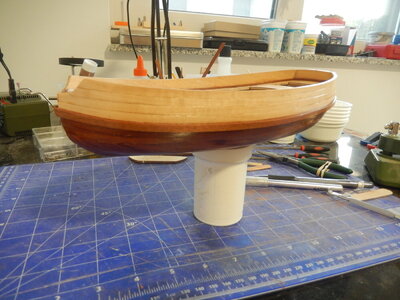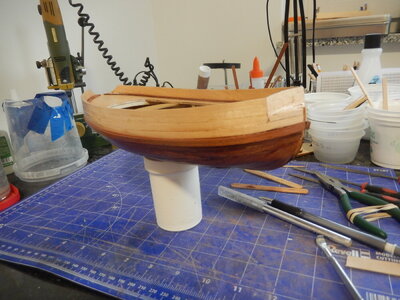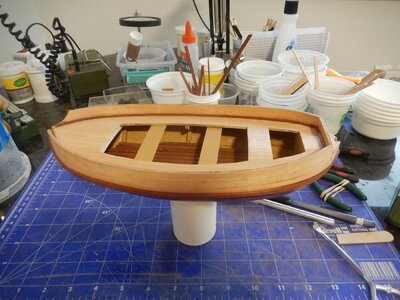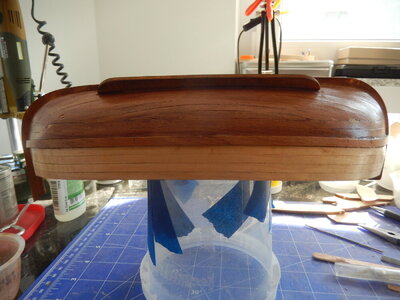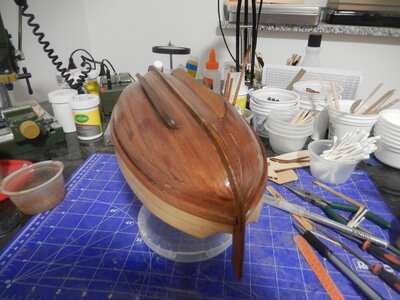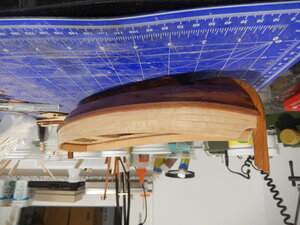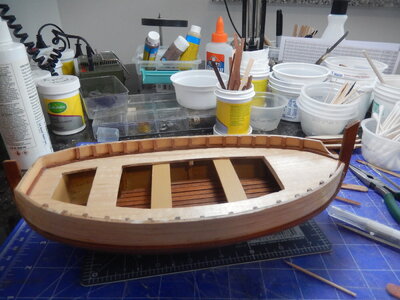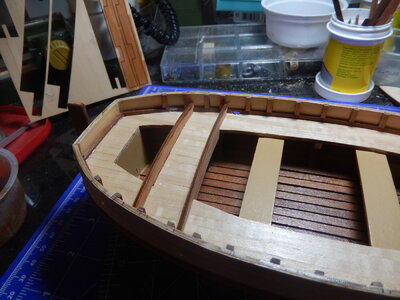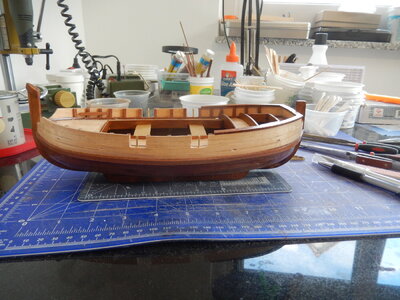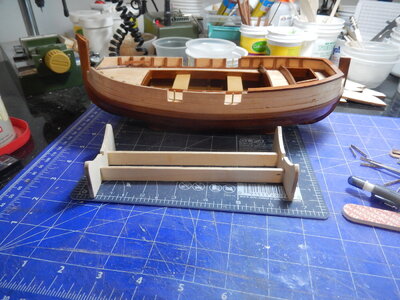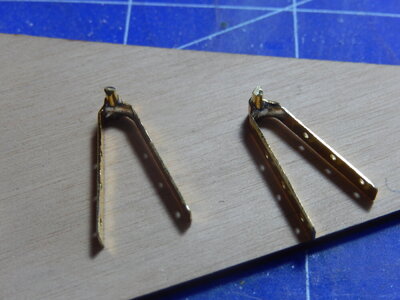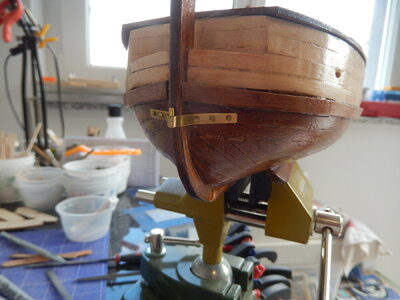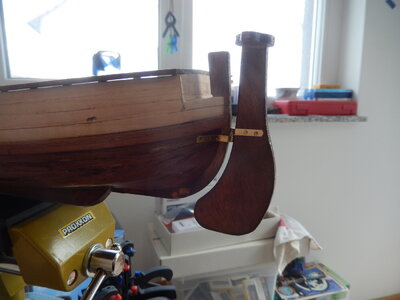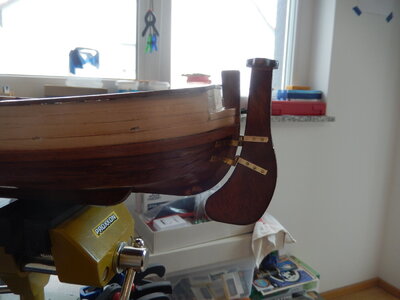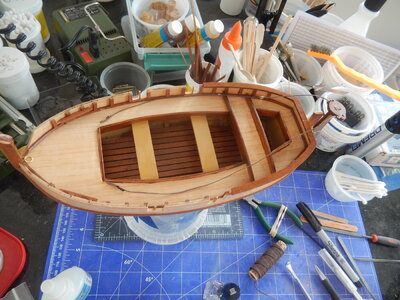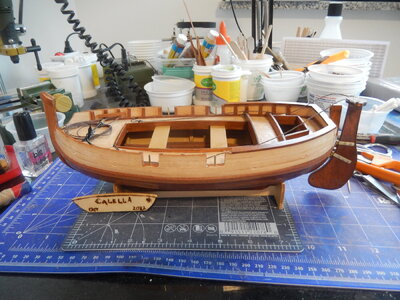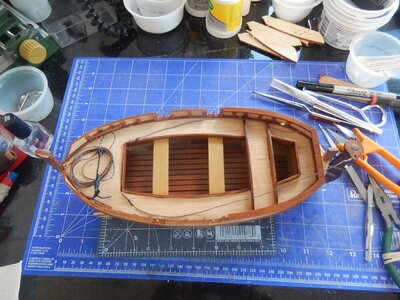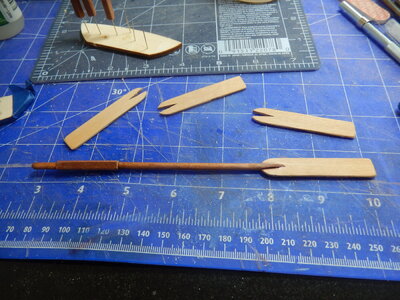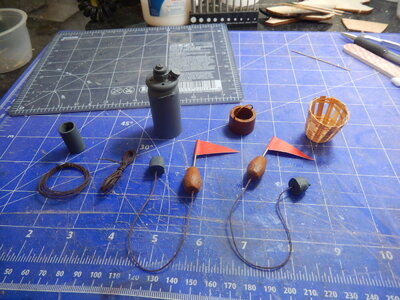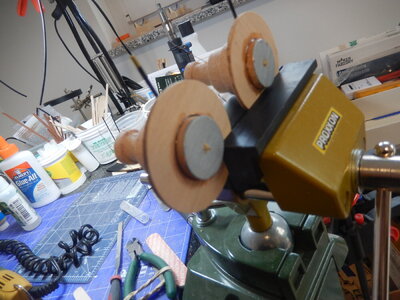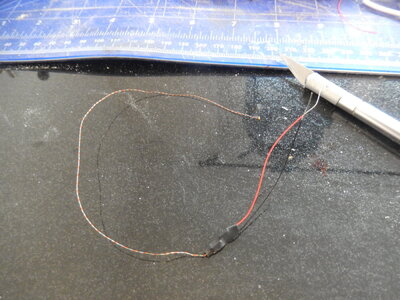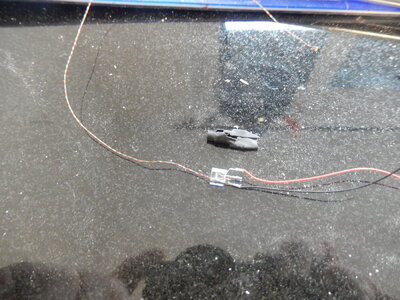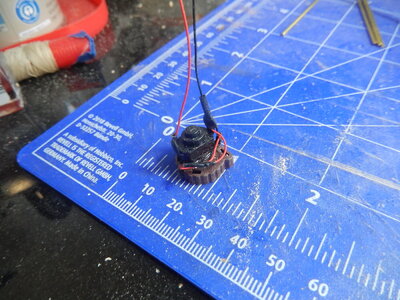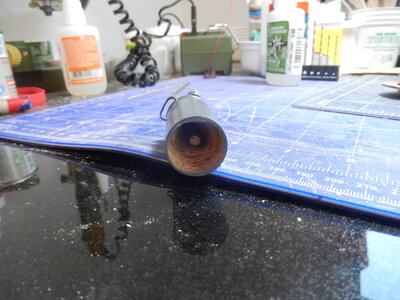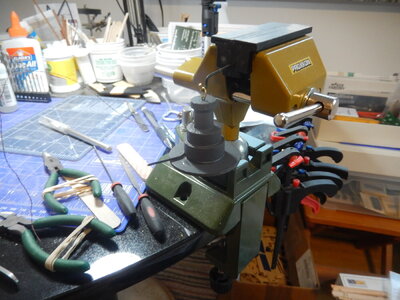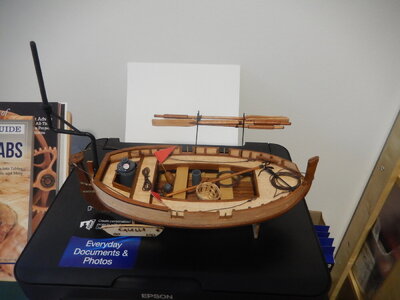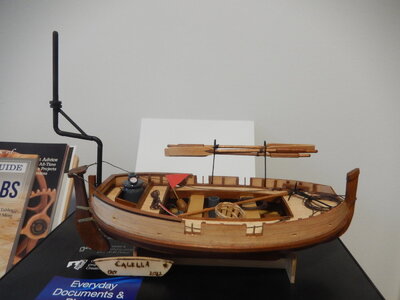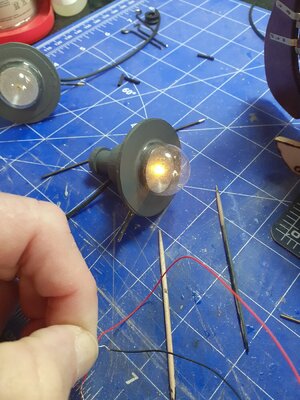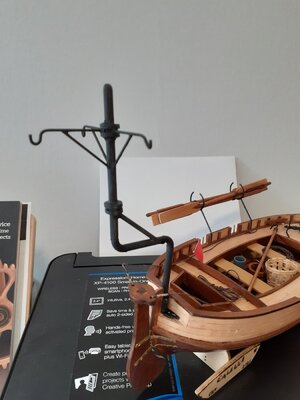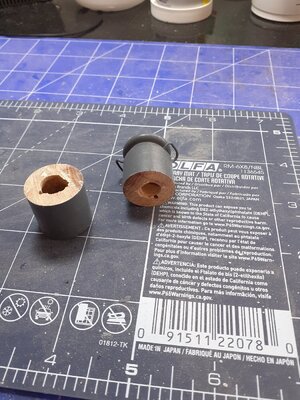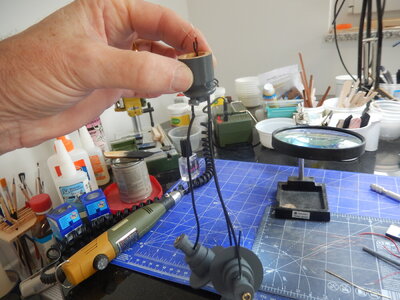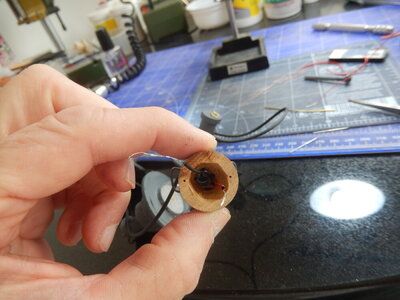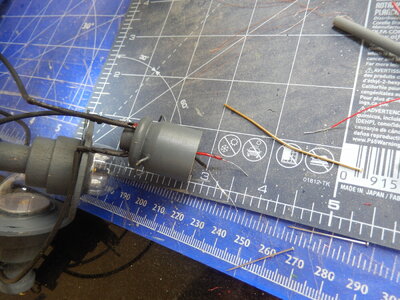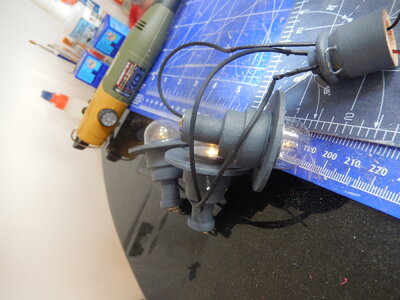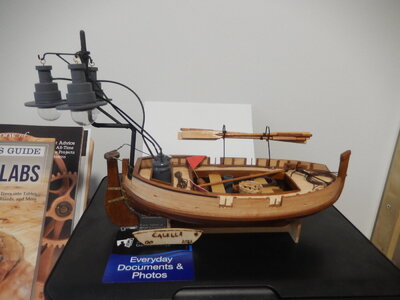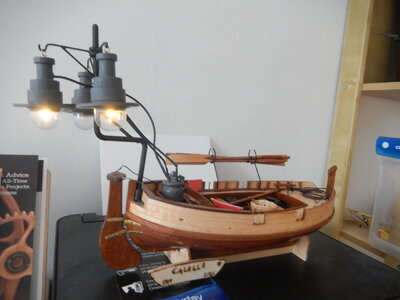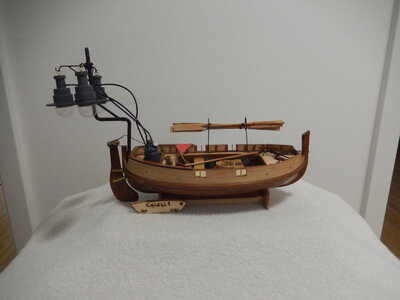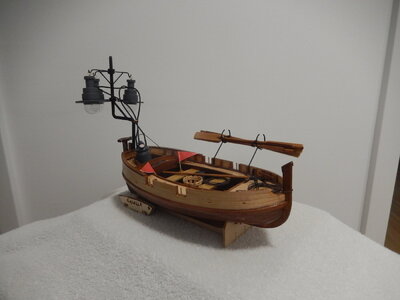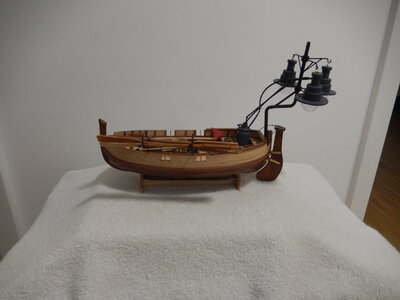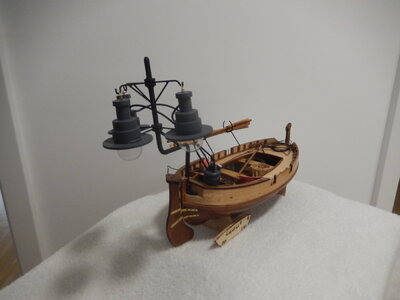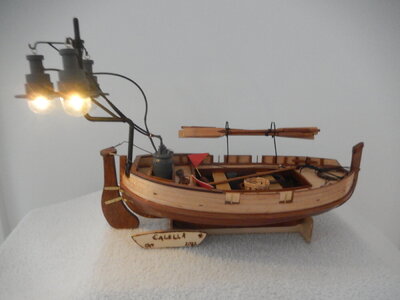20220529
Started the OcCre Calella a couple of weeks ago. Work on it has been slow as the day job has had me travelling.
When looking for a next boat model, this one caught my eye. A colorful oar-powered fishing craft equipped with lights for attracting the catch-of-the-day. At 1:15 it is a relatively large craft so plenty of room to work on everything. As it turns out, it is also fairly involved – no rigging but a double planked hull and deck and the hull has fairly severe curves fore and aft due to the bluntness of both ends.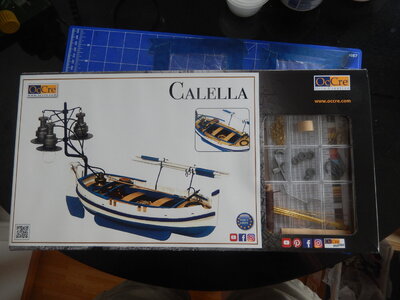
The kit contents are well organized and the castings are clean. The framing is plywood but the decking and hull planking are all good quality. No issue with those locations where the plywood might be visible as most of the boat is going to be painted. The lighting will give me the opportunity to add LEDs; I expect to be able to rig them to run off of a button battery with the wiring hidden inside the tubing that runs between the lights and the gas canister. (That is further into the build so plenty of time to develop the idea. I have plenty of LEDs in my kit; just need to get some thinner wiring.)
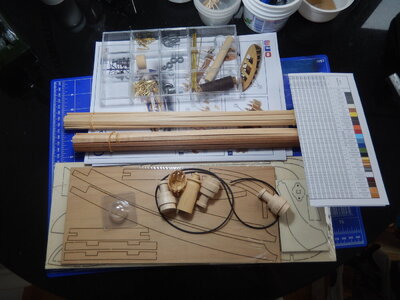
The build has been straight forward so far. Frames glued to false keel, floor planks installed, thwarts glued in, first decking added. I used 2 coats of a clear finish on the floorboards instead of painting them. I was planning to do the same on the thwarts but after spilling some thin CA on one of the thwarts I decided to paint them (the CA discolored the thwart as it was pulled into the grain) with some ochre paint I had in my collection.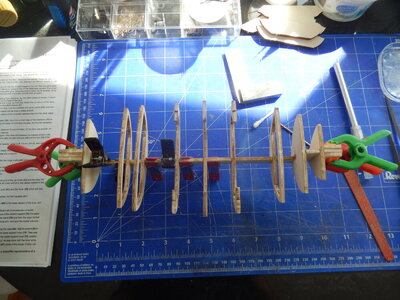
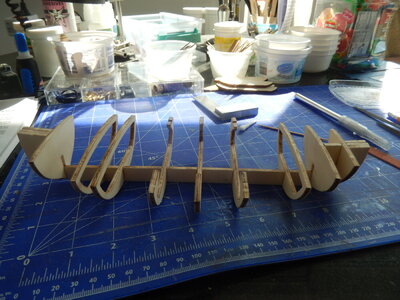
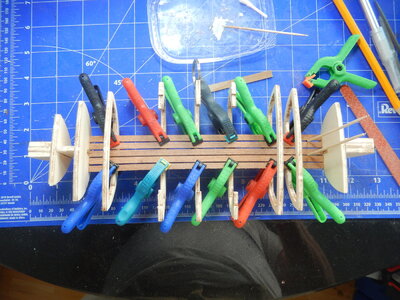
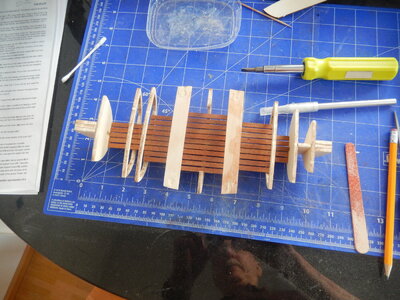
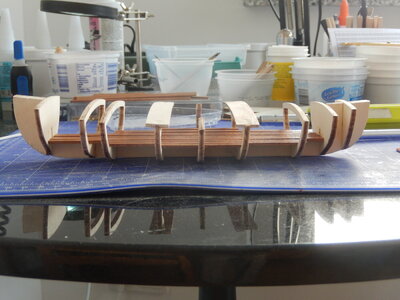
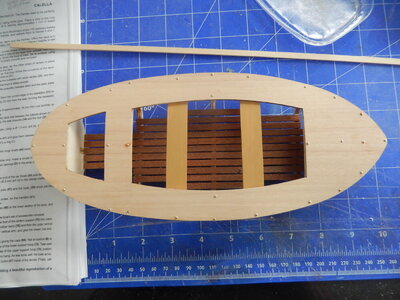
The first planking strakes on each side have been installed and work has begun on the next ones. The bend in the strakes is gentle in the middle portion of the hull but pretty severe at each end. I’ve soaked several of the strakes and then clamped them to the edge of the round table that is my work surface; this creates the major part of the hull curve. Then I use an older hair curler to create the more severe bends at the bow and stern. As the hull flattens out as the bottom is reached, enough stakes have been left unbent for now; they will be bent/twisted as needed to fit.
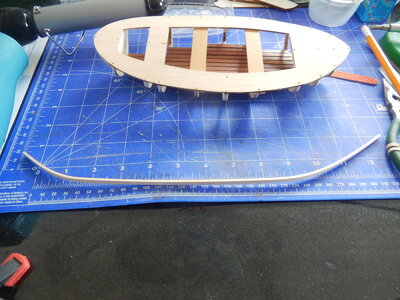
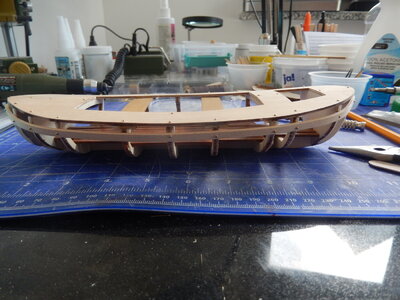
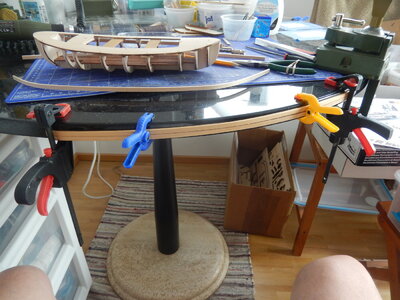
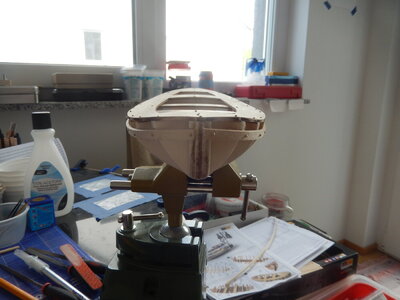
The strakes are glued on and held in place with nails. I have a 0.5 mm drill bit with a large diameter shaft for my Proxxon drill but that size is just a hair too small for the nails. 0.6 mm works better but the drill chuck won’t hold them. So I initially drill the nail holes with the Proxxon and 0.5 mm bit; then I use the spring operated twist drill and 0.6 mm bit to enlarge them just enough so the nails can be pushed in without difficulty. When I bought that twist drill I wasn’t sure if I’d have a need for it; it just seemed like a nice tool to have in my tool box. Is has proven itself so I’m glad I purchased it.
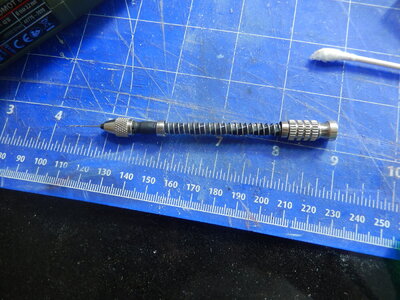
Will try and post more often as this build progresses.
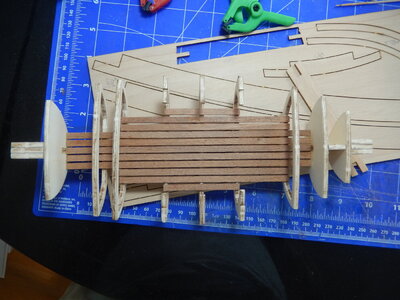
Started the OcCre Calella a couple of weeks ago. Work on it has been slow as the day job has had me travelling.
When looking for a next boat model, this one caught my eye. A colorful oar-powered fishing craft equipped with lights for attracting the catch-of-the-day. At 1:15 it is a relatively large craft so plenty of room to work on everything. As it turns out, it is also fairly involved – no rigging but a double planked hull and deck and the hull has fairly severe curves fore and aft due to the bluntness of both ends.

The kit contents are well organized and the castings are clean. The framing is plywood but the decking and hull planking are all good quality. No issue with those locations where the plywood might be visible as most of the boat is going to be painted. The lighting will give me the opportunity to add LEDs; I expect to be able to rig them to run off of a button battery with the wiring hidden inside the tubing that runs between the lights and the gas canister. (That is further into the build so plenty of time to develop the idea. I have plenty of LEDs in my kit; just need to get some thinner wiring.)

The build has been straight forward so far. Frames glued to false keel, floor planks installed, thwarts glued in, first decking added. I used 2 coats of a clear finish on the floorboards instead of painting them. I was planning to do the same on the thwarts but after spilling some thin CA on one of the thwarts I decided to paint them (the CA discolored the thwart as it was pulled into the grain) with some ochre paint I had in my collection.






The first planking strakes on each side have been installed and work has begun on the next ones. The bend in the strakes is gentle in the middle portion of the hull but pretty severe at each end. I’ve soaked several of the strakes and then clamped them to the edge of the round table that is my work surface; this creates the major part of the hull curve. Then I use an older hair curler to create the more severe bends at the bow and stern. As the hull flattens out as the bottom is reached, enough stakes have been left unbent for now; they will be bent/twisted as needed to fit.




The strakes are glued on and held in place with nails. I have a 0.5 mm drill bit with a large diameter shaft for my Proxxon drill but that size is just a hair too small for the nails. 0.6 mm works better but the drill chuck won’t hold them. So I initially drill the nail holes with the Proxxon and 0.5 mm bit; then I use the spring operated twist drill and 0.6 mm bit to enlarge them just enough so the nails can be pushed in without difficulty. When I bought that twist drill I wasn’t sure if I’d have a need for it; it just seemed like a nice tool to have in my tool box. Is has proven itself so I’m glad I purchased it.

Will try and post more often as this build progresses.

Last edited:



